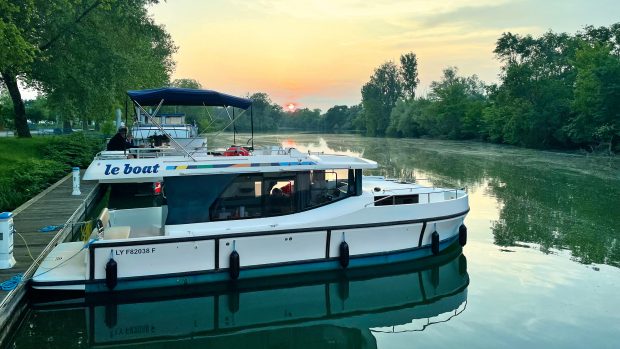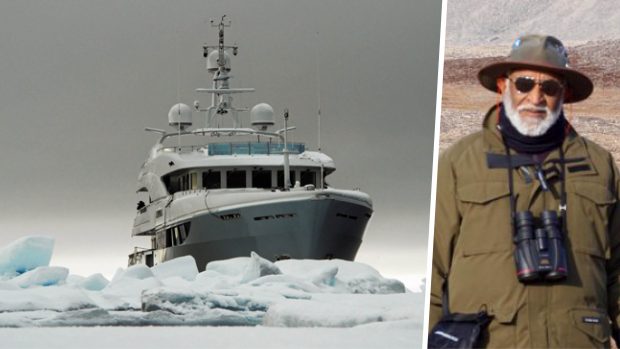Peter Cumberlidge explores the French inland waterways from Paris to Auxerre as part of a delivery trip for a new Linssen Grand Sturdy 40.9
Into the country
Cruising on from Cerises, we ran into more open country with occasional small towns and quays softened by weeping willows in Monet style. The Seine is much wider than any English river and
this feeling of scale continues far into its upper reaches.
There is still plenty of barge traffic and most of Paris’s building materials arrive by river. One of the main supermarkets is restocked by barge, though a local we met dismissed this largely as green propaganda.
 Our next stop was the ancient town of Melun (pictured above), originally built as a castle on an island in the Seine. Melun has well-preserved stronghold walls, parts of which are used as a prison.
Our next stop was the ancient town of Melun (pictured above), originally built as a castle on an island in the Seine. Melun has well-preserved stronghold walls, parts of which are used as a prison.
There’s a handy visitor quay on the island’s south shore, with electricity and water laid on. Melun has an astonishing number of restaurants and we ate well at La Bulle Gourmande, just over the middle town bridge on the south bank.
In behind the quay we saw many fine old buildings and you can cross to a lively market on the north shore. Not many people know that Melun was the original producer of Brie cheese and Brie de Melun remains an aristocrat with its melting texture, full flavour and sea salt tang. A good Burgundy red goes perfectly with Brie, and we were fast approaching that noble region.
Sleepy Saint-Mammès
Leaving Melun we passed under the golden walls of the prison, splendid from the outside though no doubt dismal within. Now we entered a secluded reach with dense woodland either side. One of the treats of cruising French rivers is that you seem to creep through the country without being noticed.
This anonymity is extremely relaxing, as if you have genuinely stepped off the working treadmill and vanished from sight. We passed a few neat villages and saw many patient fishermen, whether deeply engrossed or fast asleep it was difficult to say.
Rounding a sharp bend at Champagne-sur-Seine, we came upon the sleepy barge town of Saint-Mammès, a retreat I remembered from my dilettante student cruising days.
Saint-Mammès grew up around an important waterways junction between the Seine and the much smaller River Loing, which joins a popular canal route south towards the Mediterranean.
Such junctions are fascinating for their sense of choice between different destinations. Saint-Mammès was once a base for hundreds of family barges that ranged all over France and beyond.
It’s much quieter now, but the ghosts of past bargees flit along the quays and old streets of this once bustling port.
 Nudging up the Loing past rows of barge houseboats, we reached a pontoon near picturesque Moret-sur-Loing (pictured above), where impressionist painters once gathered to capture exquisite scenes of watermills and limpid pools graced by willow trees.
Nudging up the Loing past rows of barge houseboats, we reached a pontoon near picturesque Moret-sur-Loing (pictured above), where impressionist painters once gathered to capture exquisite scenes of watermills and limpid pools graced by willow trees.
Alfred Sisley is much fêted in Moret, an English painter who spent most of his life in France. His evocative Flood at Port Marley catches the power and mood of the Seine in winter.










